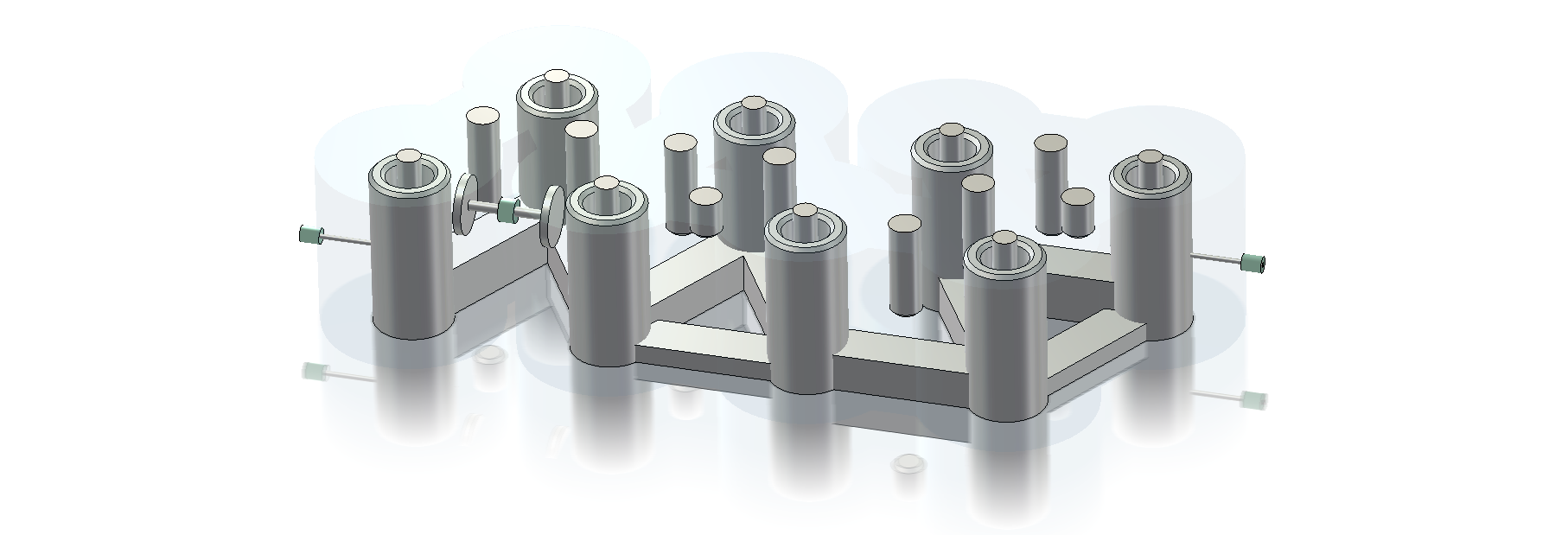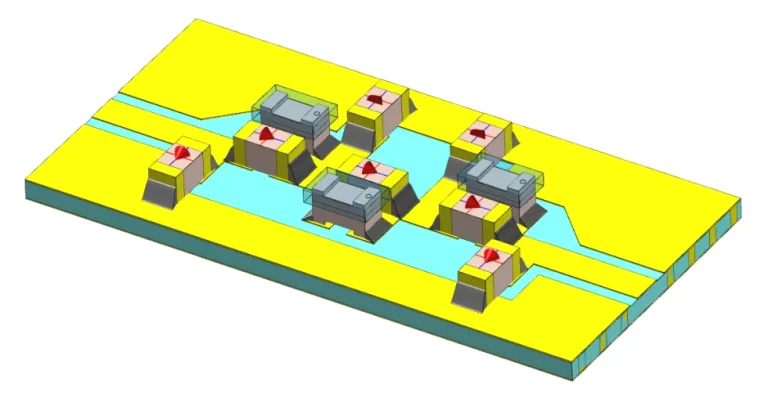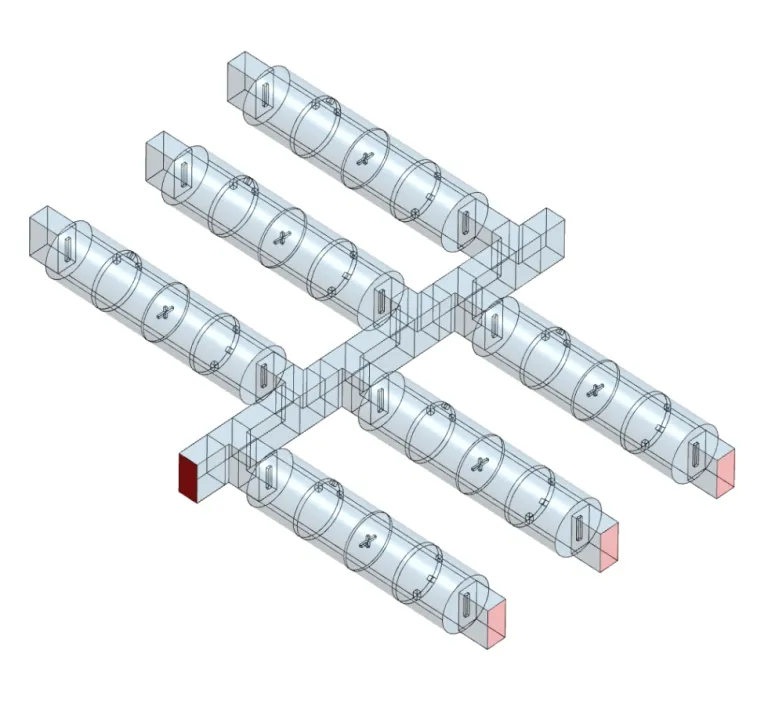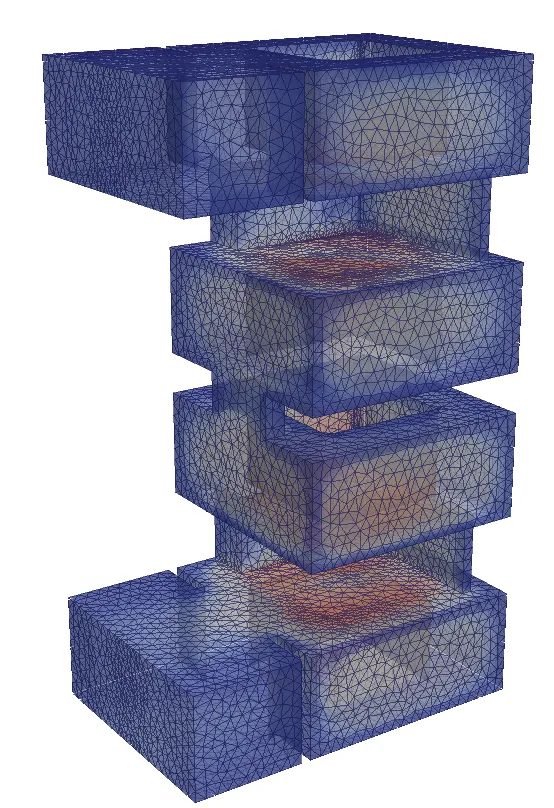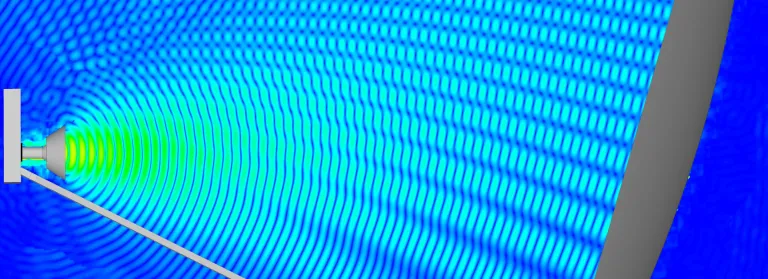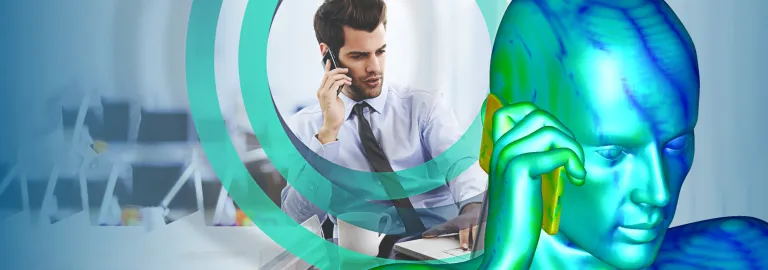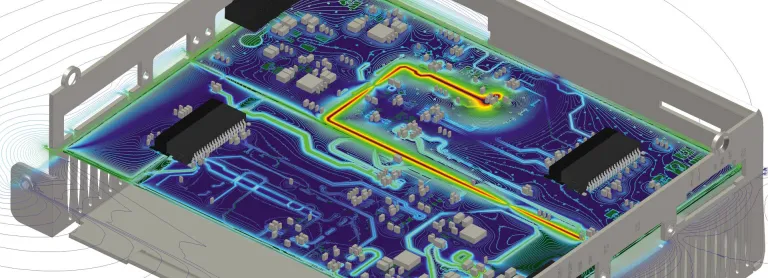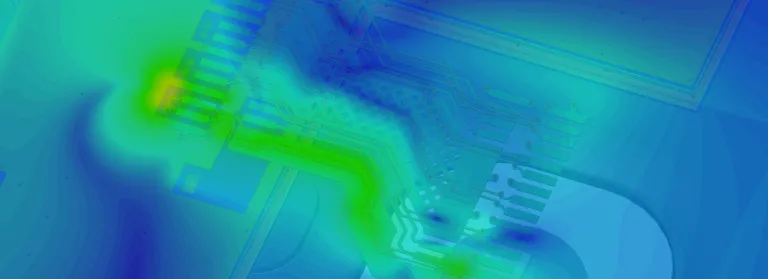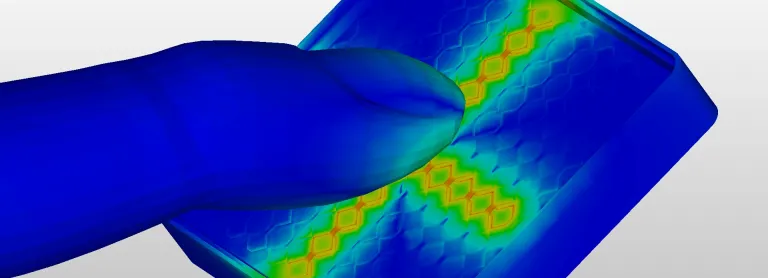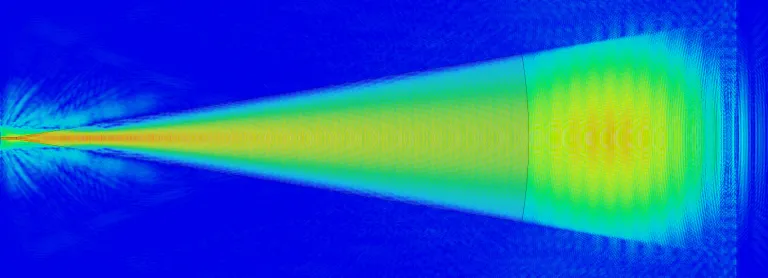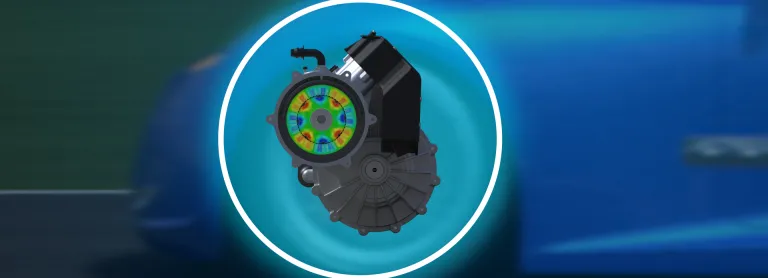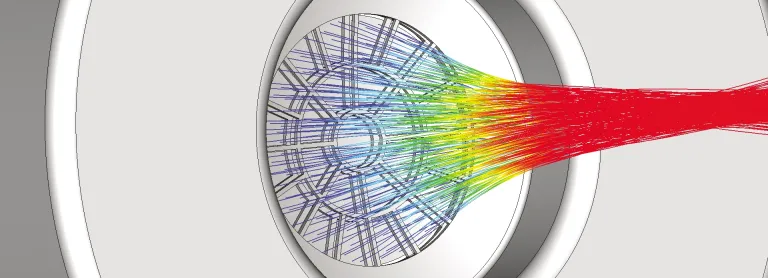Microwave/RF Filters & Components Simulation
Efficient Simulation of Highly Resonant Structures
RF-Filters and Components
CST Studio Suite technology provides a range of electromagnetic solvers available for the simulation of microwave and radio frequency (RF) filters and components.
RF-Component Simulation in the Time Domain
The Time Domain solver is the perfect solution for broadband traveling-wave components like transmission lines and transitions, as well as high-pass/low-pass filters.
Radio-Frequency Filter Design
For highly resonant structures, such as band-pass filters and diplexers, the Frequency Domain solver provides great benefits in terms of simulation accuracy versus speed. Furthermore, it features unique technologies such as the moving mesh, which is important for the mitigation of numerical noise generated by changes in the discretization. It also offers a model order reduction method that is very fast, even in calculating broadband results.
Waveguide ports can be used to excite any type of transmission line and force specific modal distributions. They can also serve as a useful tool in the analysis of transversal modes of arbitrary conducting shapes.
The modeling and analysis of devices with different components or complex building blocks, such as multiplexers, can be simplified using System Assembly & Modeling (SAM). SAM allows for quick assemblies as well as the analysis/optimization of the individual parts within the larger system – for example the feeding network of an antenna. To that end, Fest3D offers dedicated and efficient solver technology for the simulation of waveguide structures.
Passive RF Component Design
- Filter Simulation
- Waveguide Component Simulation
- High-Power Component Simulation
Filter Simulation
Communication networks, in both terrestrial and space applications, are becoming more demanding on the use of the frequency spectrum. To deal with stringent spectrum needs, filters are used. The design and analysis of such devices can be challenging and simulation can play a vital part in the development process. CST Studio Suite offers a range of solutions for different implementations.
FD3D - A Filter Design Tool
Filter Designer 3D is a general-purpose bandpass filter and diplexer synthesis tool. It uses the well-established coupling matrix synthesis and offers tuning assistance with a robust filter parameter extraction from S-parameters. This technique is also built into a dedicated optimizer for filter models that achieves fast convergence without having to do tedious space-mapping or port-tuning routines. It can even be used on the workbench where hardware can be tuned with the assistance of real-time coupling matrix extraction performed on the measurements.
To go from the filter specifications and synthesis to a fully parameterized 3D model, a range of options is available. With Filter Designer 3D, a general approach is provided that makes use of the component library. The user can either select the different available building blocks or customize it entirely according to their technology requirements. The blocks are automatically assembled according to the synthesized topology to produce a fully parameterized model that includes the optimization setup. For specific waveguide-based low-pass, wideband or dual-mode filters, Fest3D offers design wizards.
Waveguide Filter and Component Simulation
Fest3D provides fast analysis of different components in waveguide technology, which is essential for optimization routines or complex divide-and-conquer workflows. It also provides a model synthesis of dual-mode circular cavities through corrugated waveguide filters. These projects can also be connected in the schematic environment of CST Studio Suite to establish co-simulations with other solver technologies – for example, a waveguide feeding network cascaded with a horn antenna.
Circulator Simulation
Circulator components typically also require coupled simulations where ferrite materials are involved. A static field is required to bias the ferrite that would establish the non-reciprocity, which again is required for the high frequency operation of the circulator. This can be seamlessly achieved in the same environment using a single model in a coupled workflow.
High-Power Component Simulation
High-power microwave components typically require the analysis of multi-physical phenomena to understand their power-handling abilities. There are always some conducting losses in the device, which lead to thermal heating. The temperature change can cause structural deformation and, finally, it can compromise the electromagnetic performance. In a coupled workflow we can analyze these three physical domains using only a single model for the device.
RF-Breakdown Analysis
RF breakdown is another phenomenon that has the potential to destroy a device. High-intensity oscillating fields have the potential to ionize the gas inside a device, which can cause a corona discharge or, in the absence of gas and, with the presence of free electrons, multipaction. Spark3D provides advanced technologies to calculate these physical domains and demonstrates high accuracy when compared to reliable measurement data.
It is important to take all this into account early in the development process to avoid unforeseen failure of sophisticated or critical components.
Start Your Journey
Explore the technological advancements, innovative methodologies, and evolving industry demands that are reshaping the world of Microwave Filters and Components Simulation. Stay a step ahead with SIMULIA. Discover now.
FAQs About RF-Filter Design
Also Discover
Learn What SIMULIA Can Do for You
Speak with a SIMULIA expert to learn how our solutions enable seamless collaboration and sustainable innovation at organizations of every size.
Get Started
Courses and classes are available for students, academia, professionals and companies. Find the right SIMULIA training for you.
Get Help
Find information on software & hardware certification, software downloads, user documentation, support contact and services offering
